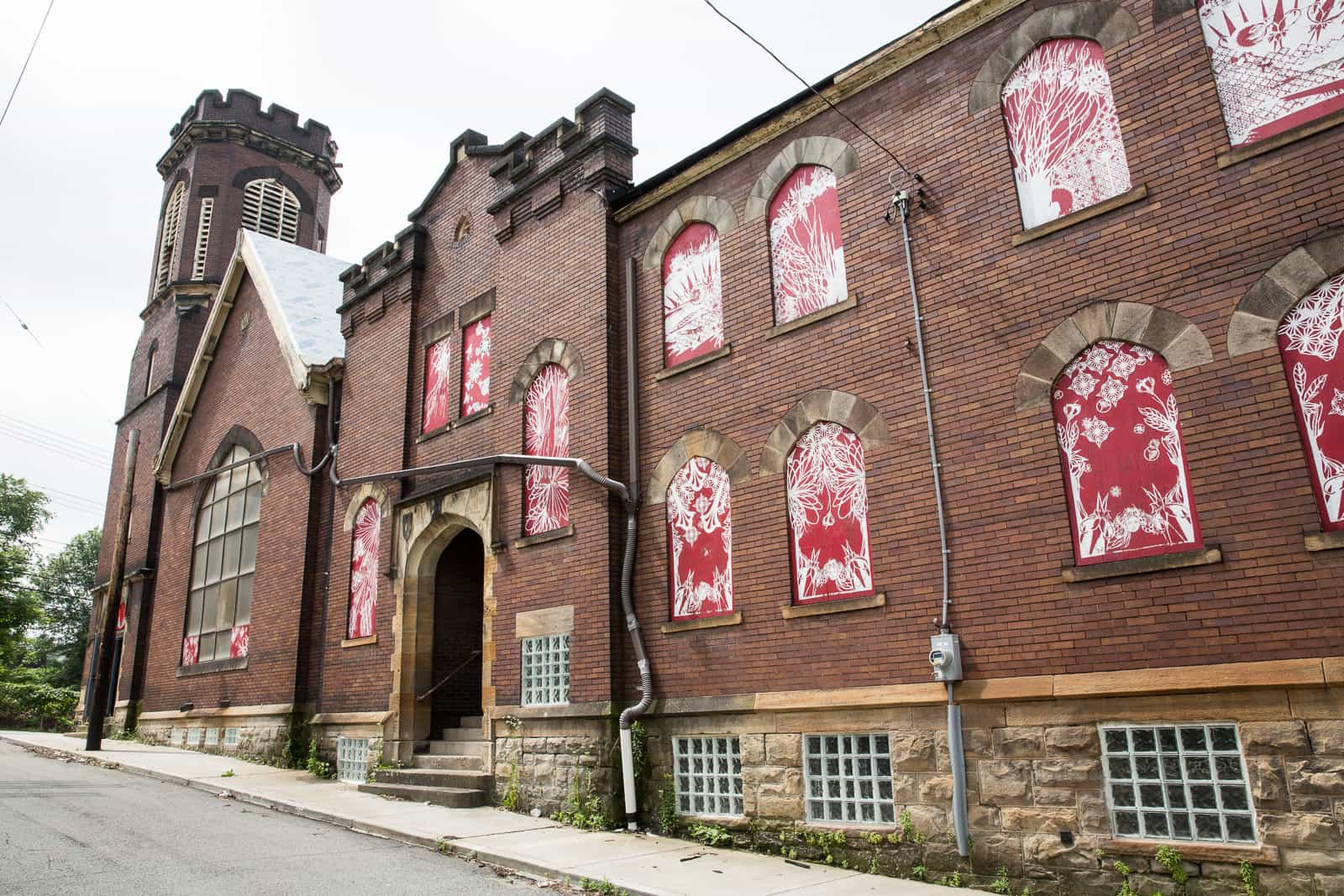Welcome to a late-afternoon Thursday edition of the Daily digest. It’s been a busy week in the world of architecture, art, and design, so let’s dive right in with a few new items on the radar of AN’s editorial team:
Learn more about the Hire Ukrainian Designers initiative
Tomorrow, May 13, the Architectural League of New York will host a virtual information session for a new initiative aiming to provide remote freelance work to Ukrainian design professionals whose livelihoods have been upended by Russia’s ongoing war in the sovereign European nation. Called Hire Ukrainian Designers, the initiative is led by a team of Boston- and Romania-based architects and designers and follows a similar grassroots effort launched earlier this spring by the Houston studio of SWA. To date, that initiative has secured work for 40 Ukrainians architects and designers with U.S.-based AEC firms.
As noted by the Architectural League, participants in the 90-minute session “will hear from the initiative’s organizers, as well as firm principals and Ukrainian designers who have already created successful working relationships through this initiative. The presenters will guide participants through an overview of each step of the hiring process, with time reserved for an audience Q&A at the end of the program.”
The online sessions kicks off at noon EDT; registration details can be found here.
Following major revamp by Fentress Architects, the Chancery at the Royal Norwegian Embassy in Washington, D.C. opens
The first-ever embassy project helmed by Fentress Architects has formally opened to the public on Embassy Row in Washington, D.C. The project, a renovation and expansion of the 1970s-era Chancery at the Royal Norwegian Embassy, was guided by four key principals per the Denver-headquartered firm: Handlekraft (vigor), Arbeidsglede (joy of work), Profesjonalitet (professionalism) and Åpenhet (openness).
As detailed in a press release, the transformation entailed a trifecta of elements: a stone shell, a cocoon, and a copper-clad mass timber hull.
“The mass and forms of the limestone-clad stone shell are deliberately segmented and scaled to show deference to the Ambassador’s residence and blend harmoniously with the historic residential neighborhood,” wrote Fentress. “While the vast majority of the existing structure and limestone cladding were retained and restored, strategic interventions were made to the stone façade in order to open-up new views of the garden and public street, block undesired views from neighbors, and introduce generous daylight within. As for the wood-finned curtainwall cocoon, it “wraps internal elements including the lobby atrium and Social Hub, as well as extrudes externally to screen rooftop elements.”
Lastly, “diplomatic spaces are demarcated and celebrated with the help of a copper-clad mass timber hull,” explained the firm. “Wrapped in copper, an open, gracious and accessible new entry to the Embassy results from lowering the original lobby structure seven feet and eliminating an associated obtrusive staircase. Copper cladding recalls Norway’s gift of copper for the Statue of Liberty. Adjacent to the entry is Atlantic Ocean Hall, which incorporates the old garden wall, and for which underutilized courtyard space was captured. Atlantic Ocean features a new mass timber structure that recalls Viking mastery of shipbuilding and woodworking. In rhythm with the historic windows, the structure’s spruce columns alternate in a triangular grid, thereby eliminating the need for additional cross bracing and creating a dramatic, yet intimate space for Norwegian hospitality and diplomacy.”
Sustainable design elements played heavily into the Embassy Row overhaul, including green infrastructure features and the extensive reuse of the existing building.
New gateway unveiled for Historic Filipinotown in L.A.
Last week, elected officials and community members gathered in Historic Filipinotown to formally inaugurate a years-in-the-making gateway monument for the largely residential Los Angeles neighborhood. Spanning 82 feet across Beverly Boulevard, the towering sign is titled Talang Gabay: Our Guiding Star and features work created by Filipino artists Eliseo Art Silva and Celestino Geronimo, Jr. As noted by Urbanize LA, prominent Filipino cultural symbols including the Parol, the Gumamela flower, and the Sarimanok appear on the 30-foot-tall gateway and welcome visitors to the neighborhood.
“This project has been a labor of love by so many people in Historic Filipinotown,” said Councilmember Mitch O’Farrell in a Department of Public Works news statement released earlier this spring. “This beautiful, historic landmark will be a source of pride for the Filipino community, and will rightfully celebrate this vibrant neighborhood and the incredible contributions Filipino Americans make to the City of Los Angeles.”
Historic Filipinotown is one of six designated API neighborhoods in L.A., joined by Chinatown, Little Tokyo, Little Bangladesh, Koreatown, and Thai Town.
H/t to Urbanize LA

Decorated Canadian architect Claude Provencher has died at 72
Claude Provencher, award-winning architect and co-founder of lauded Montreal-headquartered multidisciplinary design firm Provencher_Roy, passed away on May 6 at the age of 72.
In a May 8 statement released by the firm, Provencher is heralded as “one of the instigators of the new urban architecture that emerged in Canada in the late 1970s” who “will be remembered for his ambitious, contemporary projects that respect the genius loci.”
“A firm believer in the added value architecture brings to society, he fought for the recognition of the profession in Quebec throughout his long career,” added the firm, which Provencher founded in 1983 alongside Michael Roy. Notable works include J.- A. Desève Pavilion for the Université du Québec à Montréal (1998), the Claire and Marc Bourgie Pavilion for the Montreal Museum of Fine Arts (2011), the rehabilitation of the Montréal Tower at the Olympic Stadium (2018), and the new Samuel-De-Champlain Bridge (2019).
Wrote the firm in its remembrance:
“Today, there are countless buildings in Montréal that bear his mark. This city with its distinct seasons and its ever-changing river inspired him throughout his career. What an exciting challenge it was for him to design buildings that flourish in the sun as well as in the snow. What a privilege, as an architect, to create for this city renowned for its quality of life. As we look back over his work, one thing becomes clear: what the city inspired him to do, Claude Provencher has returned a hundredfold with beauty, sensitivity and modesty.”
The full statement on Provencher’s life and work can be viewed here.

Swoon crowdfunds to convert a former Pennsylvania church into transitional housing
Earlier this month, contemporary artist Swoon launched a Kickstarter campaign through her Heliotrope Foundation that raises funds for a restoration project that will see a once-abandoned church in the eastern suburbs of Pittsburgh be transformed into the Sanctuary, a multifaceted transitional living center for people experiencing homelessness and those with addiction issues and criminal records. The Sanctuary will “address the housing discrimination faced by people with criminal records and strengthen family bonds by providing apartments where families can stay together, rather than risk having children lost to the foster care system,” explained the campaign page.
Set to be operated by the nonprofit Za’kiyah House, the art-filled facility will include apartments, a social hall, and “sanctuary space.” Swoon and a group of friends first purchased and began to restore the blighted North Braddock property in 2007 and subsequently used it as an artist-run ceramics workshop. In its next life, the old church will be donated to Za’kiyah House by the Heliotrope Foundation.
The Kickstarter campaign is specifically raising funds to replace the church’s existing windows and install a large stained-glass piece designed by Swoon and hand-crafted by local artists who are members of the Za’kiyah House community. As of this writing, the Heliotrope Foundation has raised $31,175—that’s more than halfway to the initial goal of $50,000. The campaign concludes on May 30.
“The opportunity to contribute to this work means so much to me,” wrote Swoon, who was born as Caledonia Curry. “Both of my parents went through incarceration and rehab as a result of drug addictions, and the presence of houses like this meant that they could come back into my life in much stronger ways. I’ve seen what happens when someone has a chance to rebuild their life, and how their second chance impacts everyone around them. I see this work as a step toward healing the cycles of intergenerational trauma that fuel so many of our societal crises.”











